Earth has entered a Perseid meteor stream in space. This means we see Perseids every night, with its peak on August 12th. Typically, there are more than 90 meteors per hour around the peak. Although there is a full Moon two days before the peak, the Perseid meteor shower 2025 phase is forecast to bring us a great celestial display.
The best Perseids display happens in the pre-dawn hours, when the Perseus radiant is at its highest in the sky. With the Full Moon just two days prior, 2025 observations should give the best hours just after sunset until midnight, as the bright waning gibbous phase of the Moon will disturb the show.
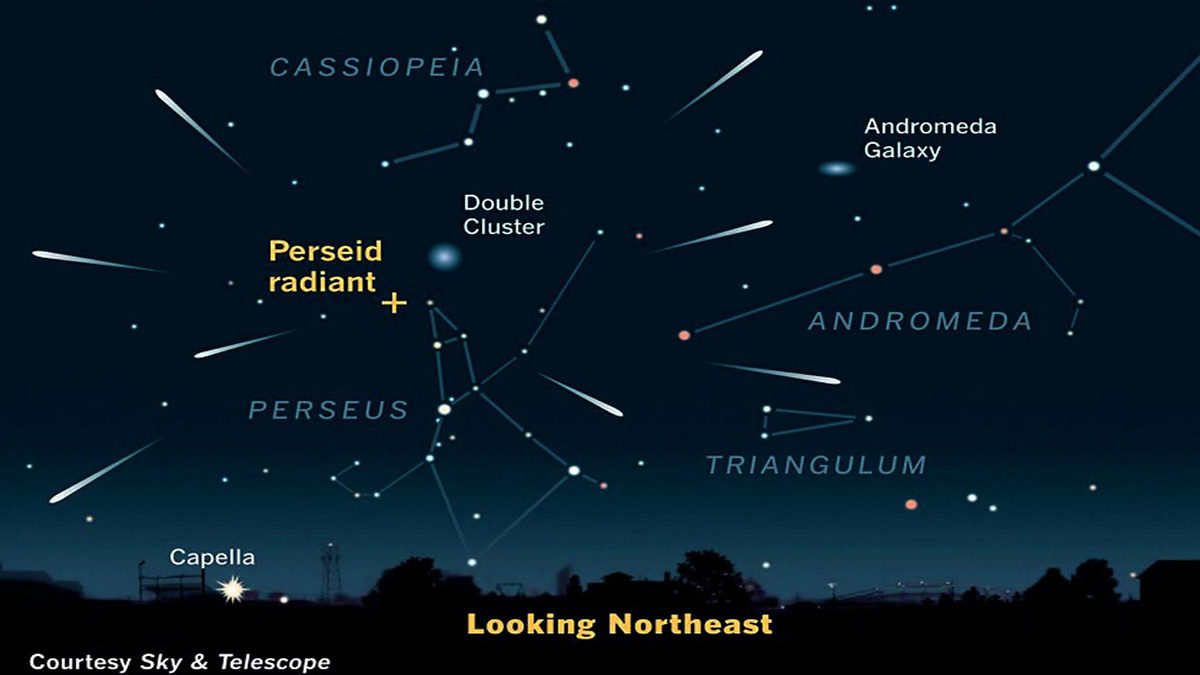
No matter where you live on Earth, two great meteor showers happen yearly. The Perseid meteor shower from late July to late August, and the mid-December Geminids. They both bring a spectacular celestial show, producing hundreds of meteors in the nights around the peak.
Both of these meteor showers are known as the most reliable night sky events every year, with a zenithal hourly rate (ZHR)* of more than 100 meteors quite warranted.
These days, the Perseid meteor shower is already ramping up, with an increasing number of meteors every night. The peak intensity will happen from August 11th to 13th this year.
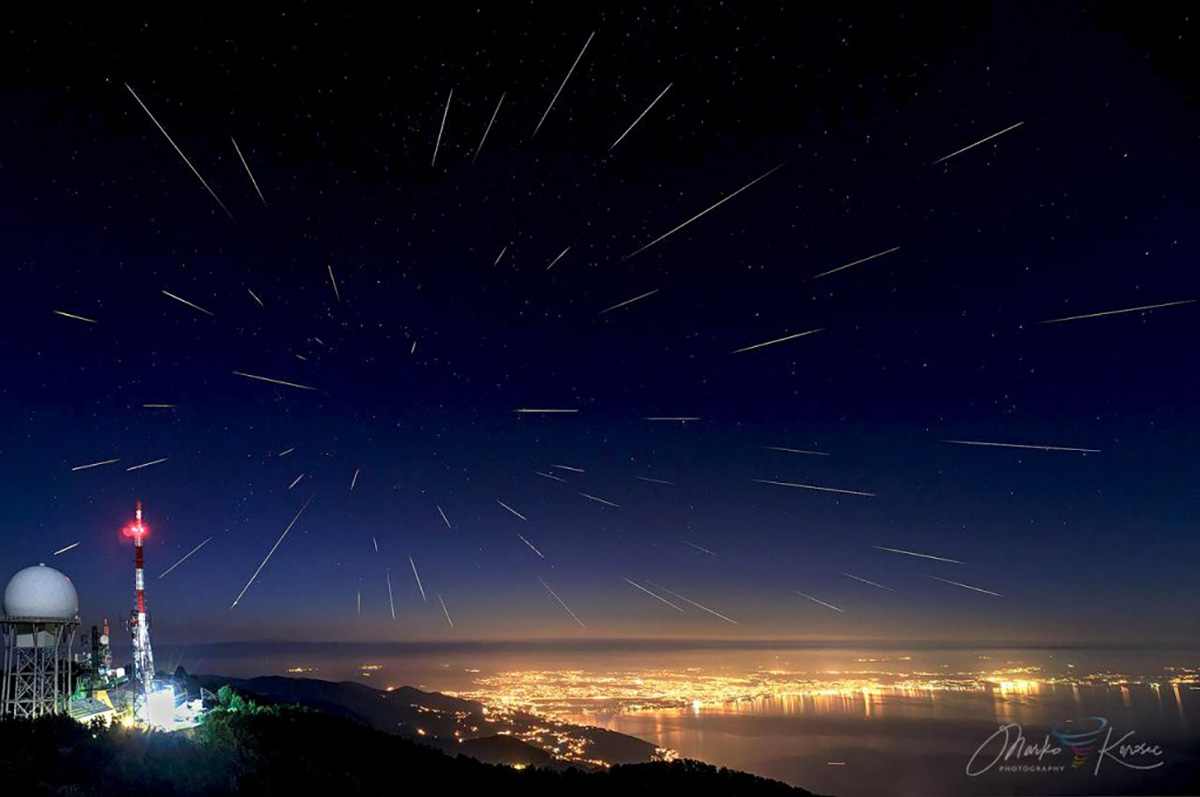
Unlike last year, we are less lucky with the Moon, as the peak nights come just two days after the Full Moon. On August 12th, the peak night, the Moon rises around local midnight. So, the meteor’s peak, which occurs in the evening hours (August 12th at 20 UTC), will have the best conditions over Europe and Asia before the Moon comes out. The night’s second half will remain active without a dark sky due to the shining Moon.
*ZHR – The Zenithal Hourly Rate of any meteor shower tells us the number of meteors a single observer would see in an hour of peak activity if it were at the zenith. The conditions are considered excellent (stars are visible up to magnitude 6.5). The rate that can effectively be seen is nearly always lower and decreases the closer the radiant is to the horizon.
Let us give you all the answers you might be questioning about the Perseid meteor shower and learn how we can photograph meteors.
What is the Perseid meteor shower?
The Perseid meteors are small dust particles, crumbs of comet 109P/Swift-Tuttle, burning up as they hit our atmosphere at about 59 km/s. They are known as one of the most regular and reliable meteor showers, peaking in mid-August of every year. They are so dependable that they used to be known as tears of St. Lawrence for decades.
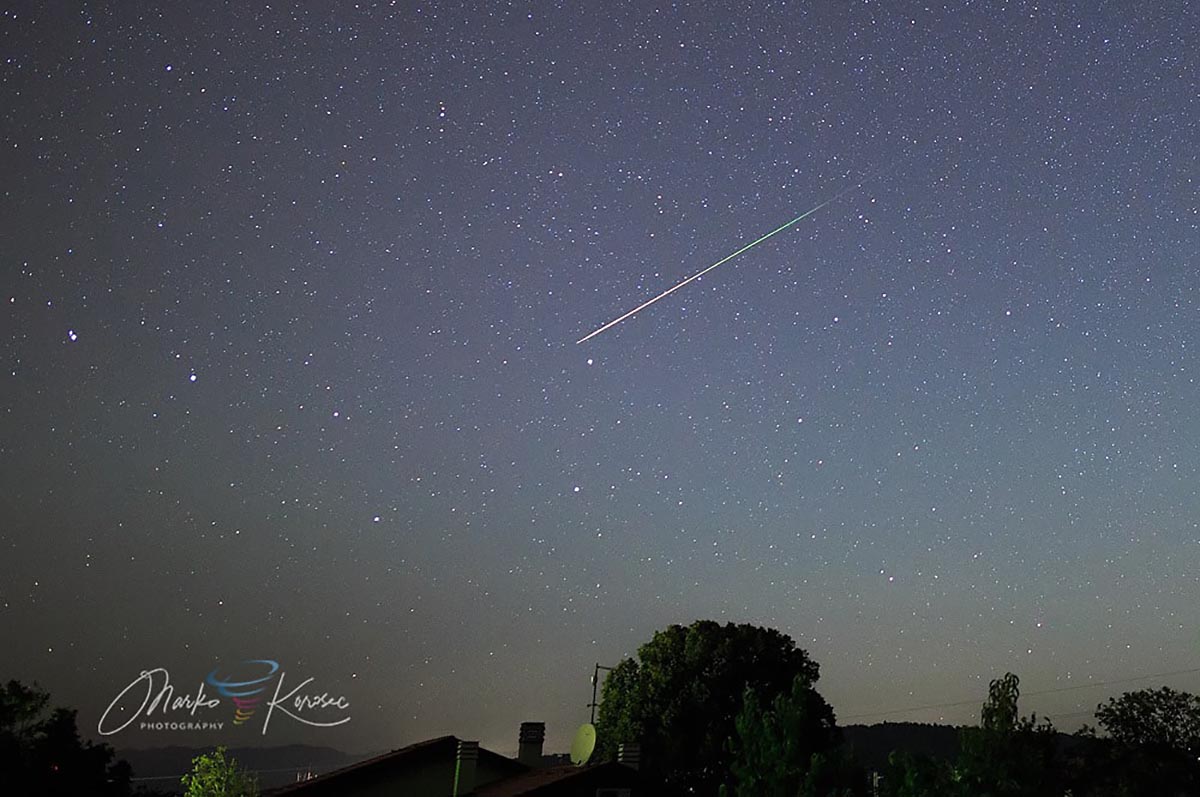
The Perseid meteor shower is rich in bright, colorful meteors, including fireballs. The celestial show occurs high in the atmosphere, well above the regular weather, at altitudes of about 100 km—right at the edge of space.
While they may seem close, the Perseids appearing overhead will be about 100 km away, while those close to the horizon will be 500 km away or more.
An average bright Perseid meteor is produced by a dust particle (called a meteoroid) that is only several millimeters across. The brightest Perseids often leave persistent dust trails, slowly twisted and contorted by the upper-level winds.
They can last tens of seconds if you watch them with the naked eye and minutes if you use binoculars.
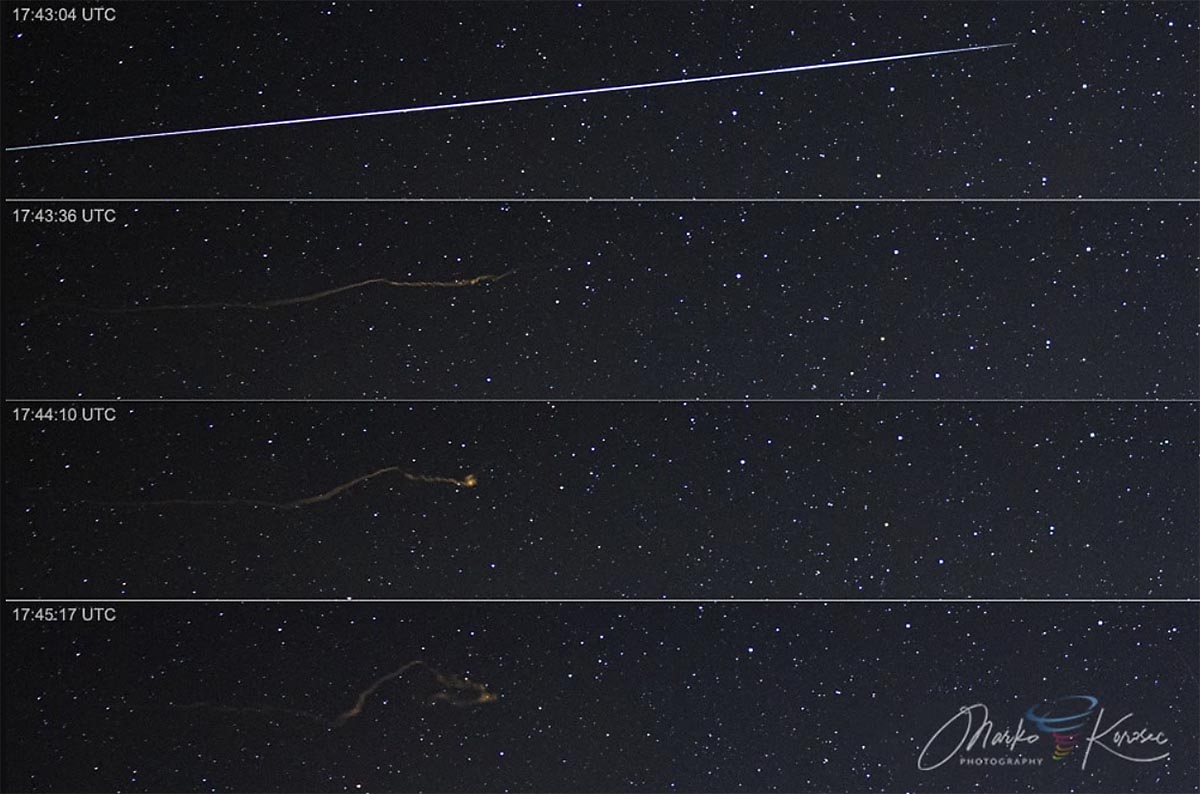
Finding the spot where the Perseids come out in the sky is pretty simple. All the meteors will look like they come from a point in Perseus’s constellation. If you trace all the Perseid meteors backward, they all seem to come from the constellation Perseus, near the famous Double Cluster. Hence, the meteor shower is named in honor of the constellation Perseus, the Hero.
This point in the sky is called the radiant. The higher the radiant is in the sky, the more meteors appear.
Perseid meteor shower during the peak in 2025 – Moon rises after midnight
The best opportunities to see the Perseids will happen on the peak night and one night before the peak.
In 2025, the United States and European observers will have the evening and first few hours of the night with great observations before the waning gibbous Moon rises. The Moon rises around your local midnight, so the second half of the night will deliver less favorable conditions despite the active meteor shower peak.
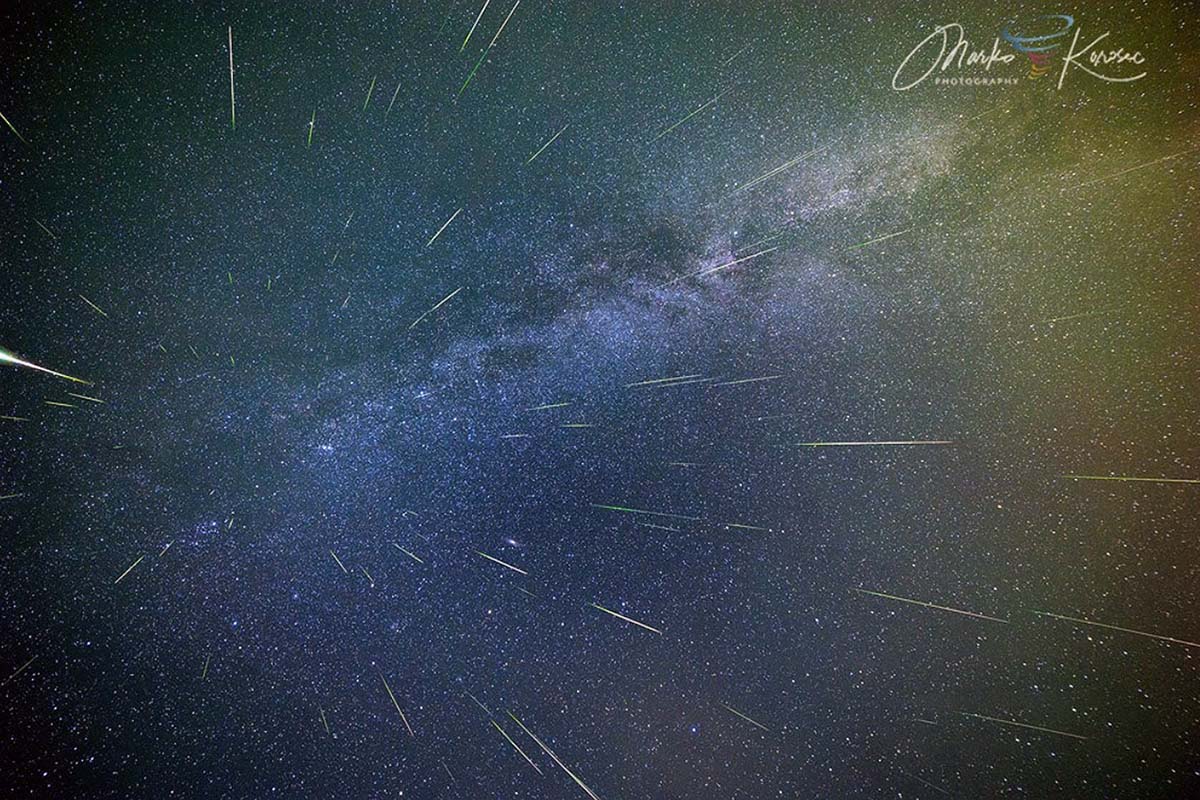
The Perseids’ radiant is visible all night but rises higher during the second half, so if the skies are dark, more meteors are visible. With the Moon rising around midnight, the best times will be before it comes out to the sky.
To observe or photograph the Perseid meteor shower, find a spot with the clearest skies possible, away from the city lights. If you have an option, get to higher observing locations in the hills or mountains: the sky will be clearer and darker there, and you will be able to see the highest number of meteors from up there.
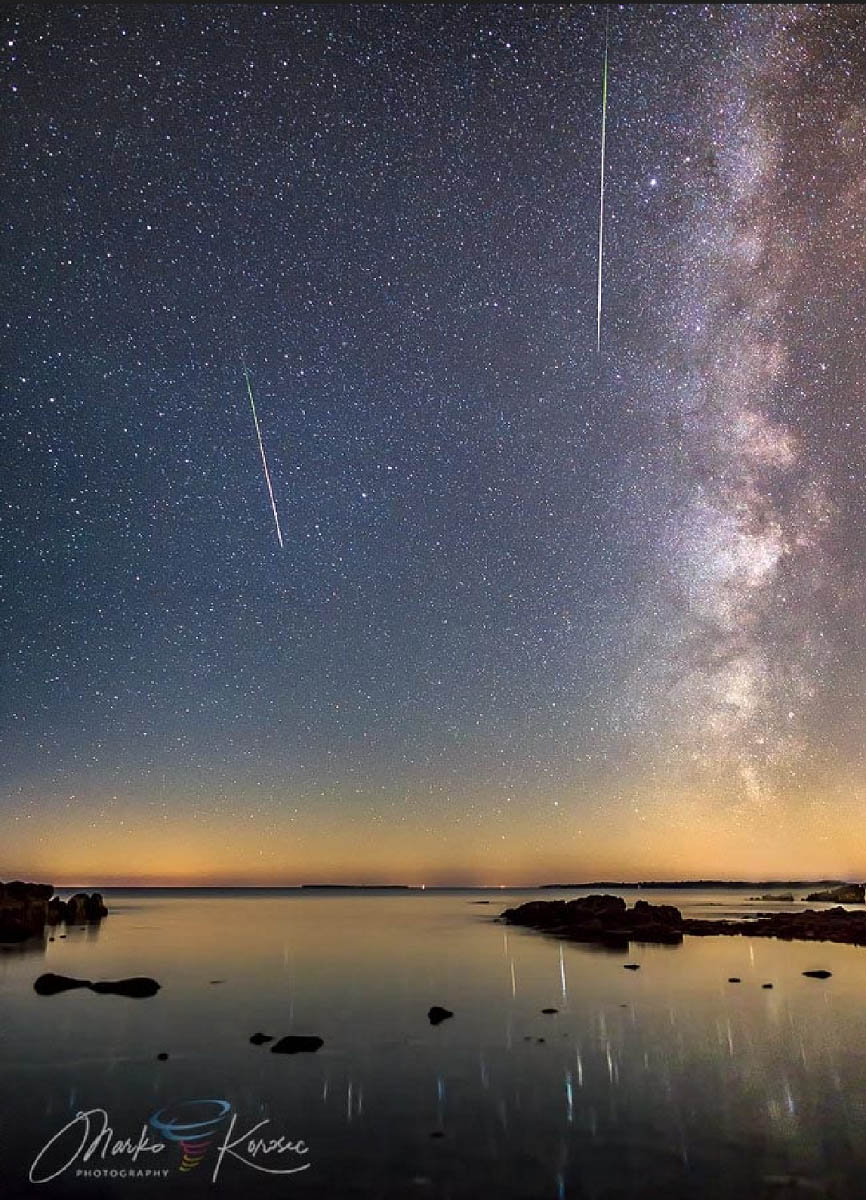
Meteor photography – how to photograph a meteor shower
It is always great to see spectacular meteors that photographers catch with their cameras. Are you tempted to try it yourself? If you want to photograph the meteors, let us give you some tips.
No matter which meteors showers you observe, it is always fun. And with some luck, you can catch a big, bright meteor – a fireball! Here is how you can get that shot, too.
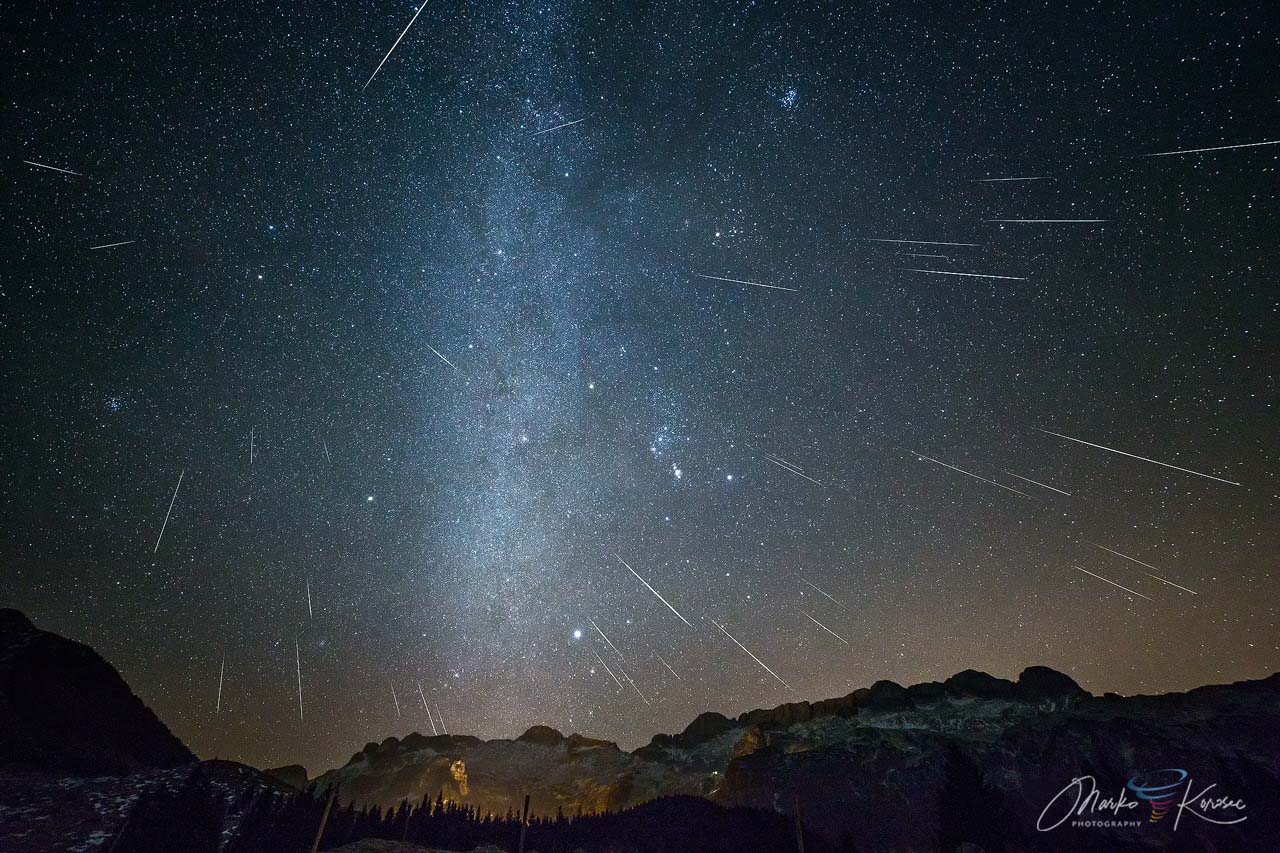
What equipment do we need?
We need a camera, lens, tripod, and some luck. However, when it comes to meteor photography, more specific equipment is necessary to get the best results out of your photography attempts.
- A digital camera with the option of making long exposures. Any interchangeable lens camera (DSLR or mirrorless) will have this option, including compact cameras, and some phone cameras nowadays can also take long exposures
- A tripod. The stronger, the better. Especially if you plan to photograph in higher elevations, where winds could be stronger
- A remote trigger for the camera (or timer) that helps you to photograph continuously and without shaking the camera when pressing the shutter button
- And indeed… a meteor shower. Preferably the highest activity possible, so during the peak nights
Learn more about the general meteor photography below:
Meteor photography – how to photograph a meteor shower
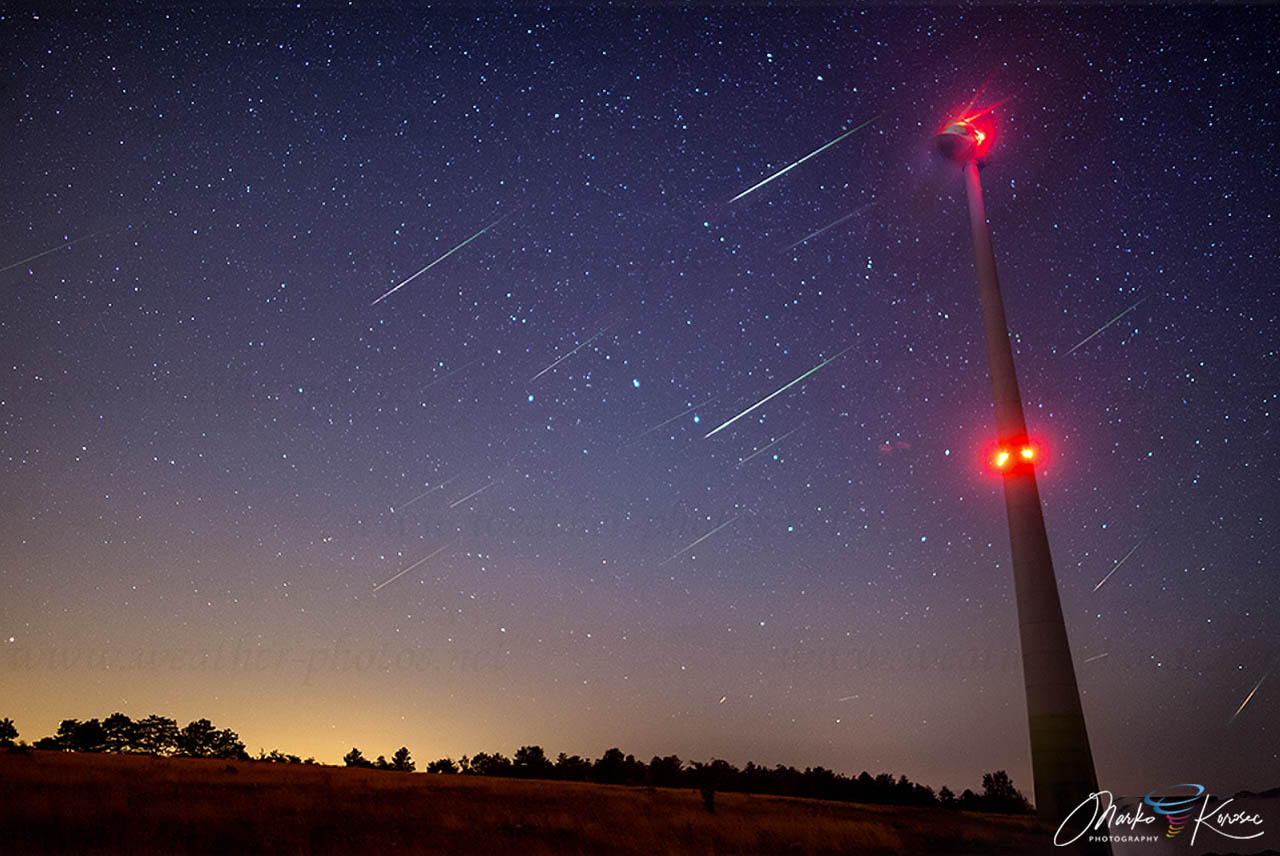
What to expect?
What can you expect as you are ready to enter the field?
First, be ready to take many photos before a good catch of a meteor appears. Be prepared to spend at least an hour or two under the starry sky to catch a good one, even in the strongest of meteor showers, like the summer’s Perseid meteor shower or the Geminids in winter.
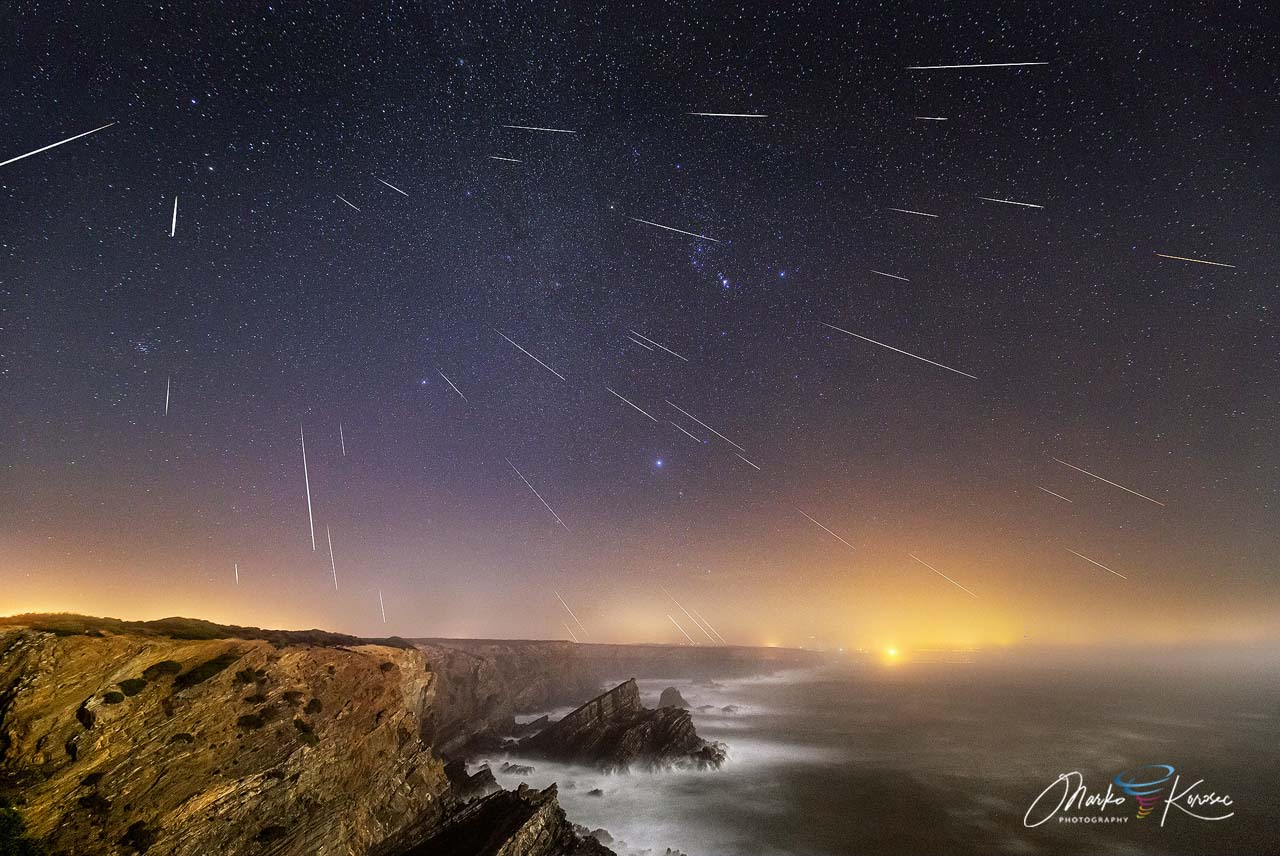
Moderate meteor showers like the Lyrids or the Orionids take even more time, as their hourly rate is lower than most famous meteor showers. But patience does pay off. The more time you spend photographing meteors, the better the chances you will finally catch a good one, even a fireball.
Photographing a Perseid meteor shower can often bring hours and hours of taking hundreds or even thousands of photos. But, when things go right… whoa! Imagine you catch an exploding fireball. You will forget all the waiting until then!
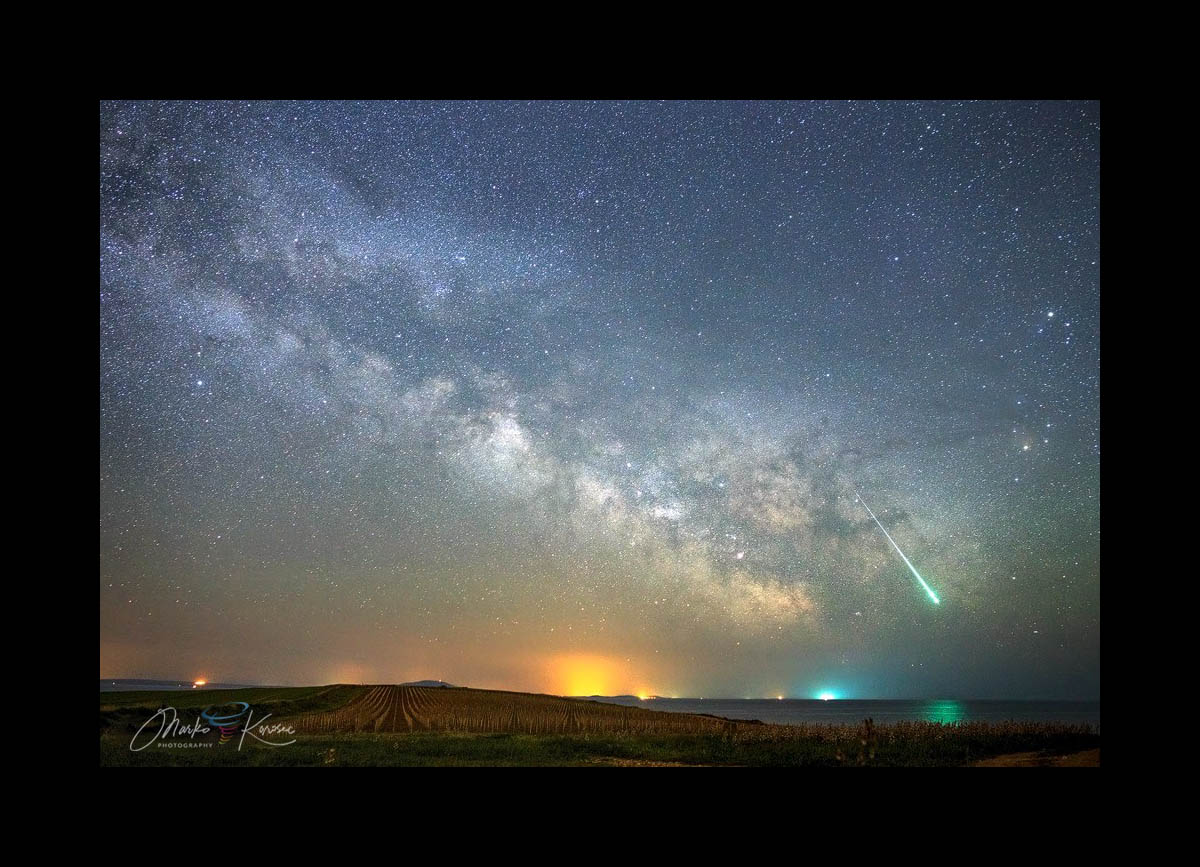
Conclusion – Perseid meteor shower 2025: A spectacular display despite nearly a Full Moon
What can we say at the end? The Perseid meteor shower is one of those celestial events you don’t want to miss. Seriously! Moonless night or Full Moon, don’t miss this one.
The main downside of the summer months is the weather disturbance from the daytime thunderstorm activity; the remaining clouds often extend into the nighttime hours. But weather patterns are changing, so we might get lucky and see stable weather with low cloud coverage and thunderstorm activity around the peak.
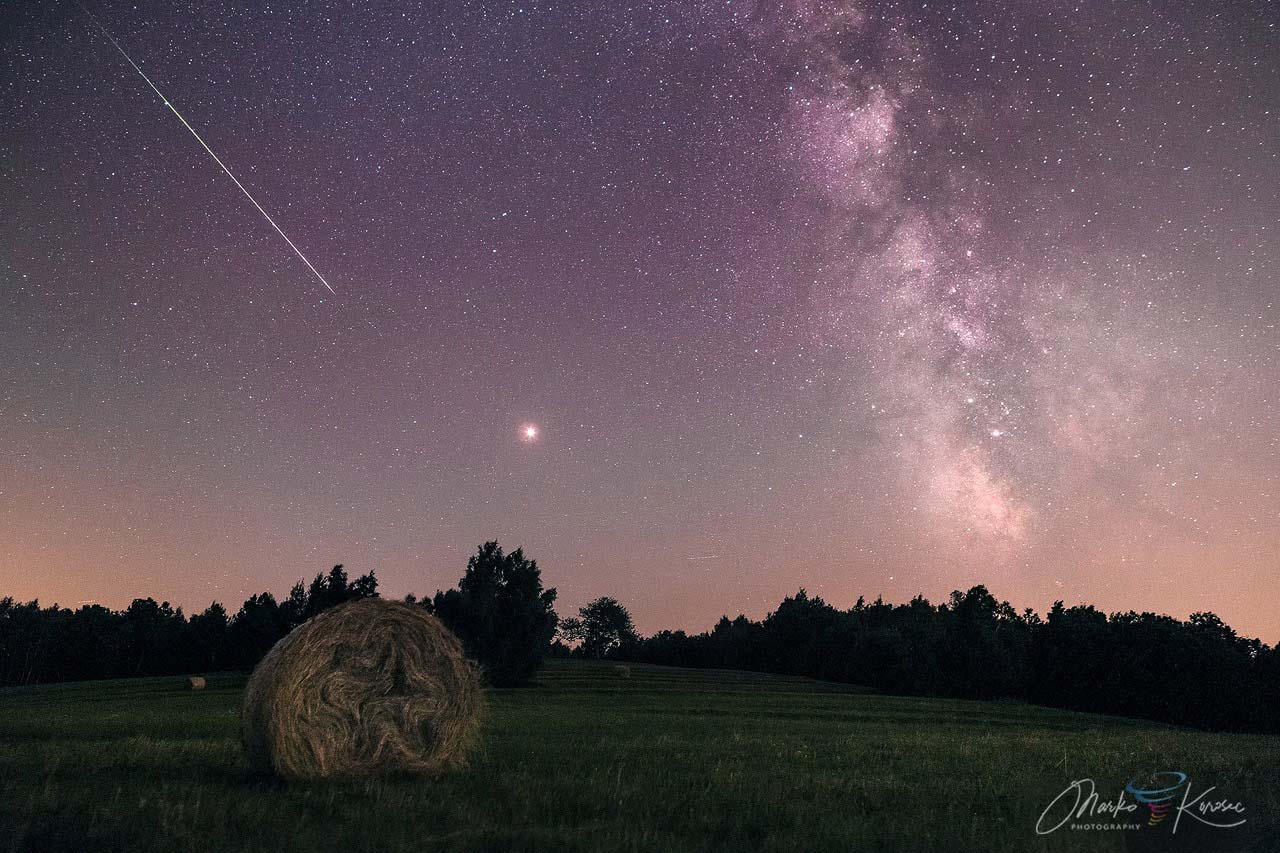
The Perseid meteor shower this year is expected to produce around 90-120 meteors per hour during both nights around the peak, on August 11th and 12th. The Perseids’ main peak occurs around August 12th, 20 UTC.
This is almost as perfect as it gets for Europe, but it is less favorable for the United States and Canada since the peak occurs around 6 hours before the night arrives.
To conclude, it is advised to go out, observe, and photograph the Perseids right after sunset until midnight, before the bright Moon rises. The night darkness will quickly vanish thereafter, so we only need clear skies.
*ENJOY* your observation, and feel free to report your observations to our Facebook SWE Report / Discuss group; if you catch some, we will happily share them with our followers!